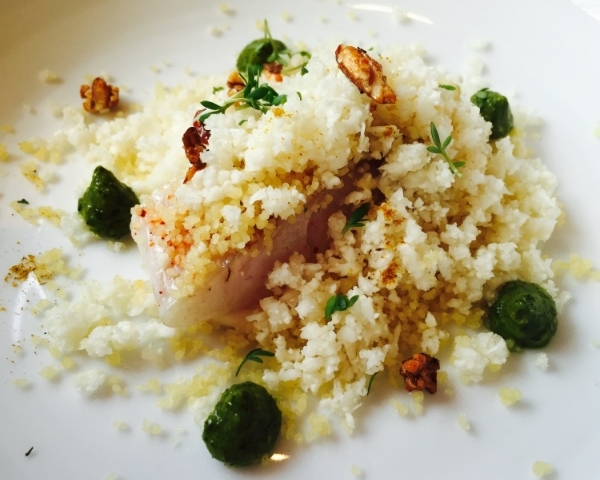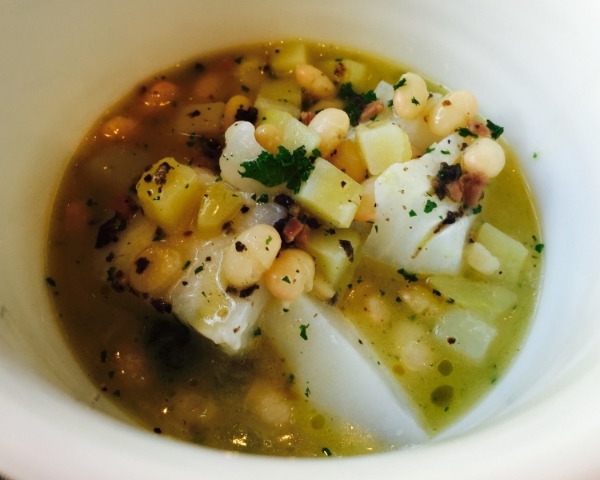How can just three ingredients -- one of them salt -- taste so creamy, rich and delicious?
Years ago when I was writing about vegetable recipes created by three-star chefs, Pierre Gagnaire demonstrated this simple, sublime, wintry Jerusalmen artichoke (also known as sunchoke) soup. Over time, I have turned the thick soup into a sauce for pasta; reduced it a bit for a fine vegetable puree; or thinned out the nutty liquid with stock, using it as a base for poaching oysters or scallops. If truffles are not available when making this soup, try a last-minute drizzle of fragrant hazelnut oil as garnish. It’s your choice as to peel the artichokes or not. Peeling the gnarled, knobby vegetable is a tedious task, and I rather like the dots of peel that give character to the puree. Just be sure to scrub the vegetable well.
Jerusalem artichoke soup
8 servings | Equipment: A blender or a food processor; 8 warmed, shallow soup bowls.
2 quarts (2 l) whole milk
2 teaspoons fine sea salt
2 pounds (1 kg) Jerusalem artichokes (sunchokes), scrubbed and trimmed
2 tablespoons minced black fresh black truffles or minced truffle pelings, or 1 tablespoon best-quality hazelnut oil (such as Leblanc brand)
1. Rinse a large saucepan with water, leaving a bit of water in the pan. This will prevent the milk from scorching and sticking to the pan. Pour the milk into the pan and add the sea salt.
2. Peel the Jerusalem artichokes, chop coarsely and drop immediately into the milk. (This will stop the vegetable from turning brown as it is exposed to the air.) When all the Jerusalem artichokes are in the pan, place over moderate heat and simmer gently until soft, about 35 to 40 minutes. Watch carefully so the milk does not overflow the pan.
3. Transfer the mixture in small batches to the blender or the food processor. Do not place the plunger in the feed tube of the food processor or the blender or the heat will create a vacuum and the liquid will splatter. Purée until the mixture is perfectly smooth and silky, 1 to 2 minutes (note that using a blender rather than a food processor will result in a much smoother texture).
4. Return the soup to the saucepan and reheat it gently. Taste for seasoning. Pour it into the warmed soup bowls and shower with the minced truffle, or drizzle with the hazelnut oil.
A SOUP, A SAUCE, A VEGETABLE SIDE DISH:
This soup can easily be transformed into a sauce for pasta or to serve as a vegetable side dish. Simple reduce the soup over low heat to desired thickness , 5 to 10 minutes.
This recipe was first published in Simply Truffles. Buy the book here.
All rights reserved. Please do not reproduce without permission.








